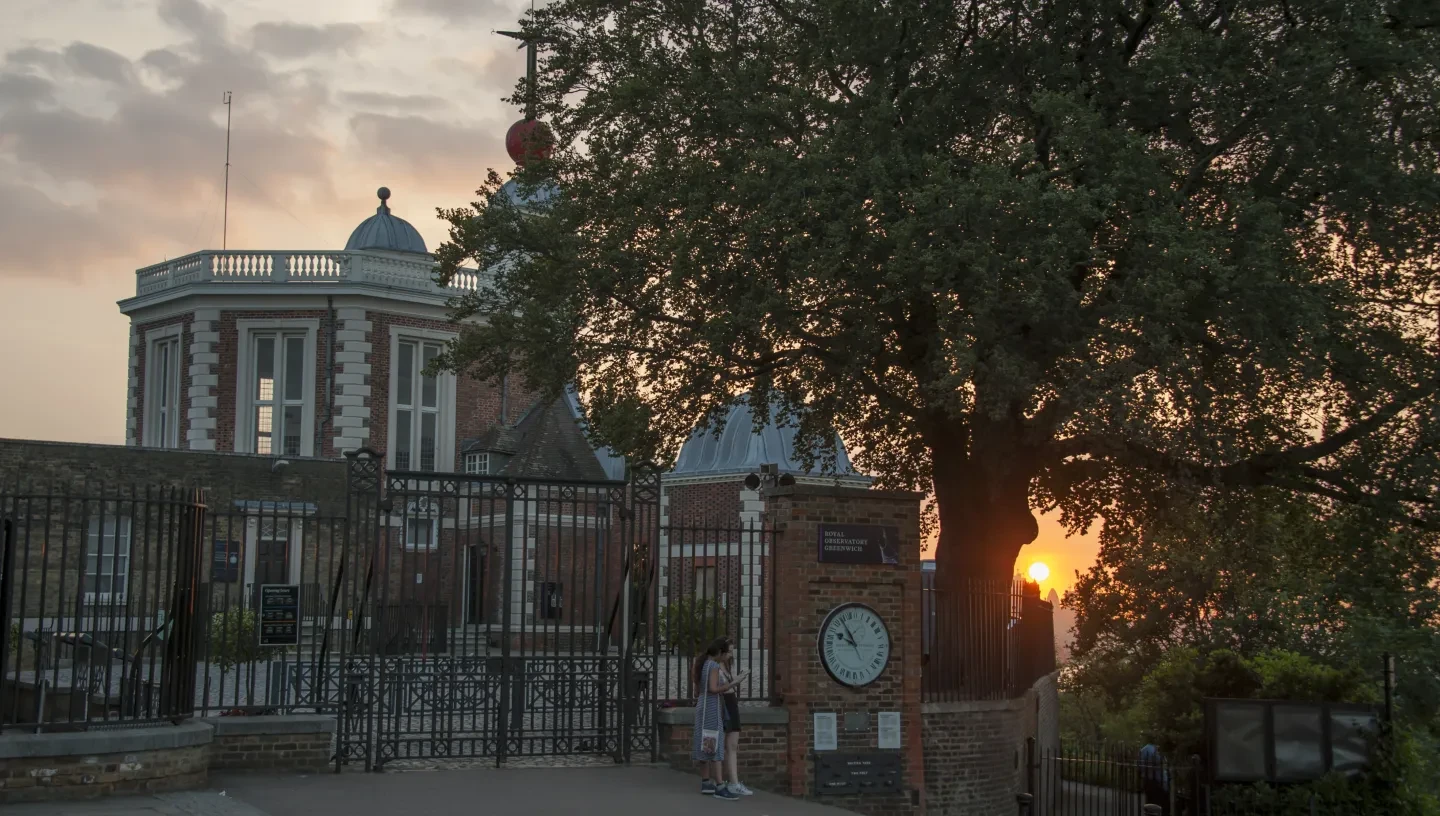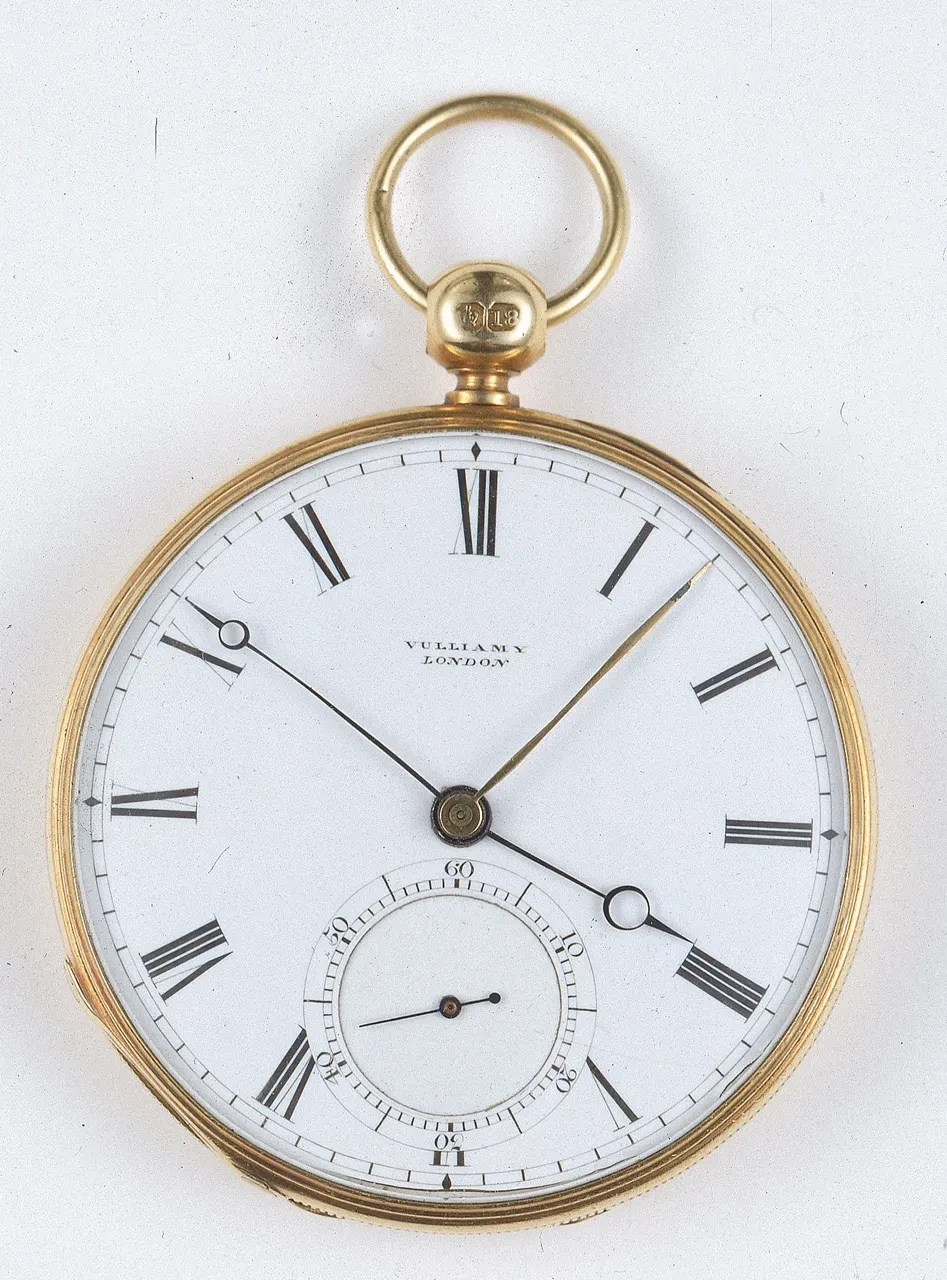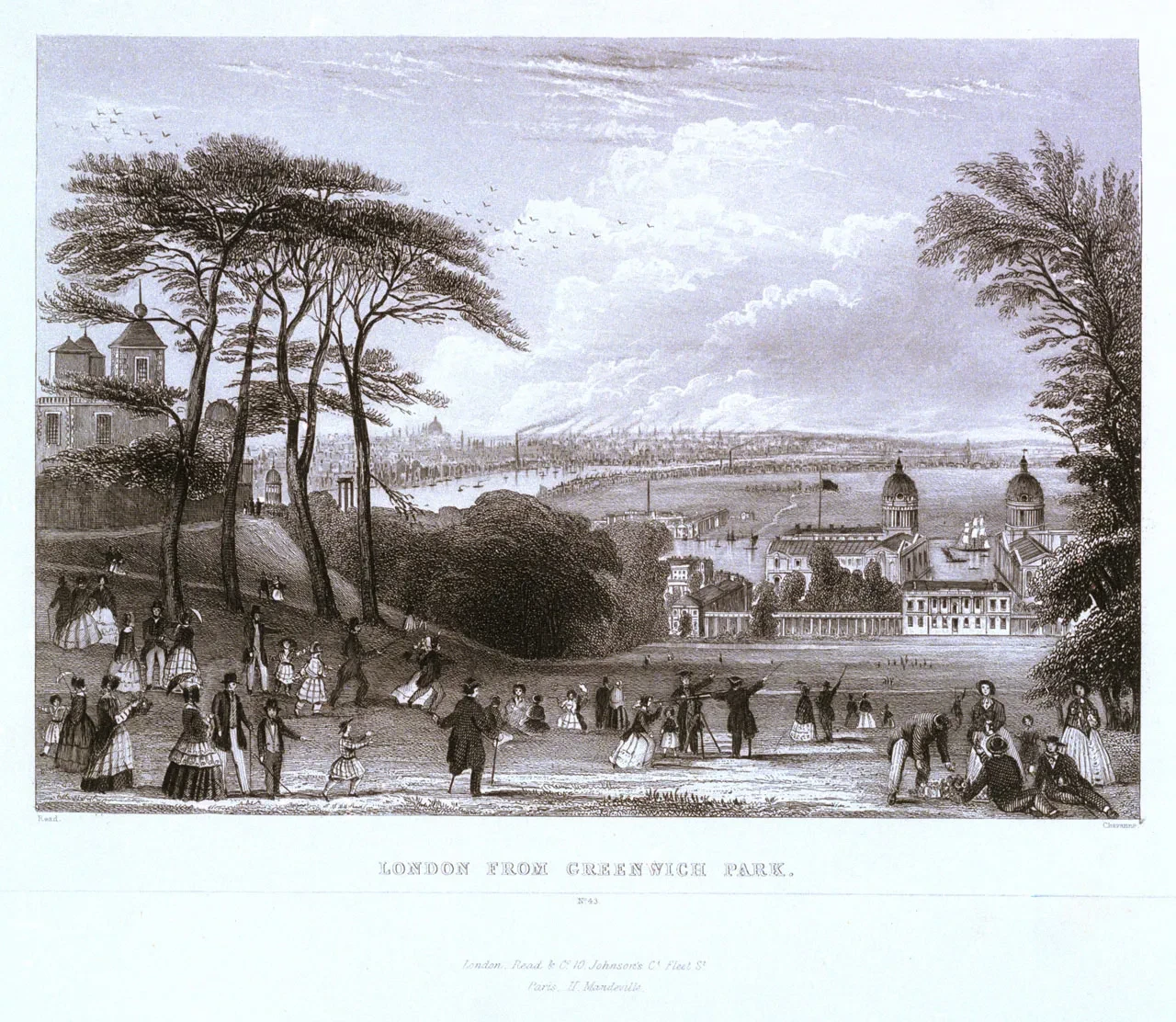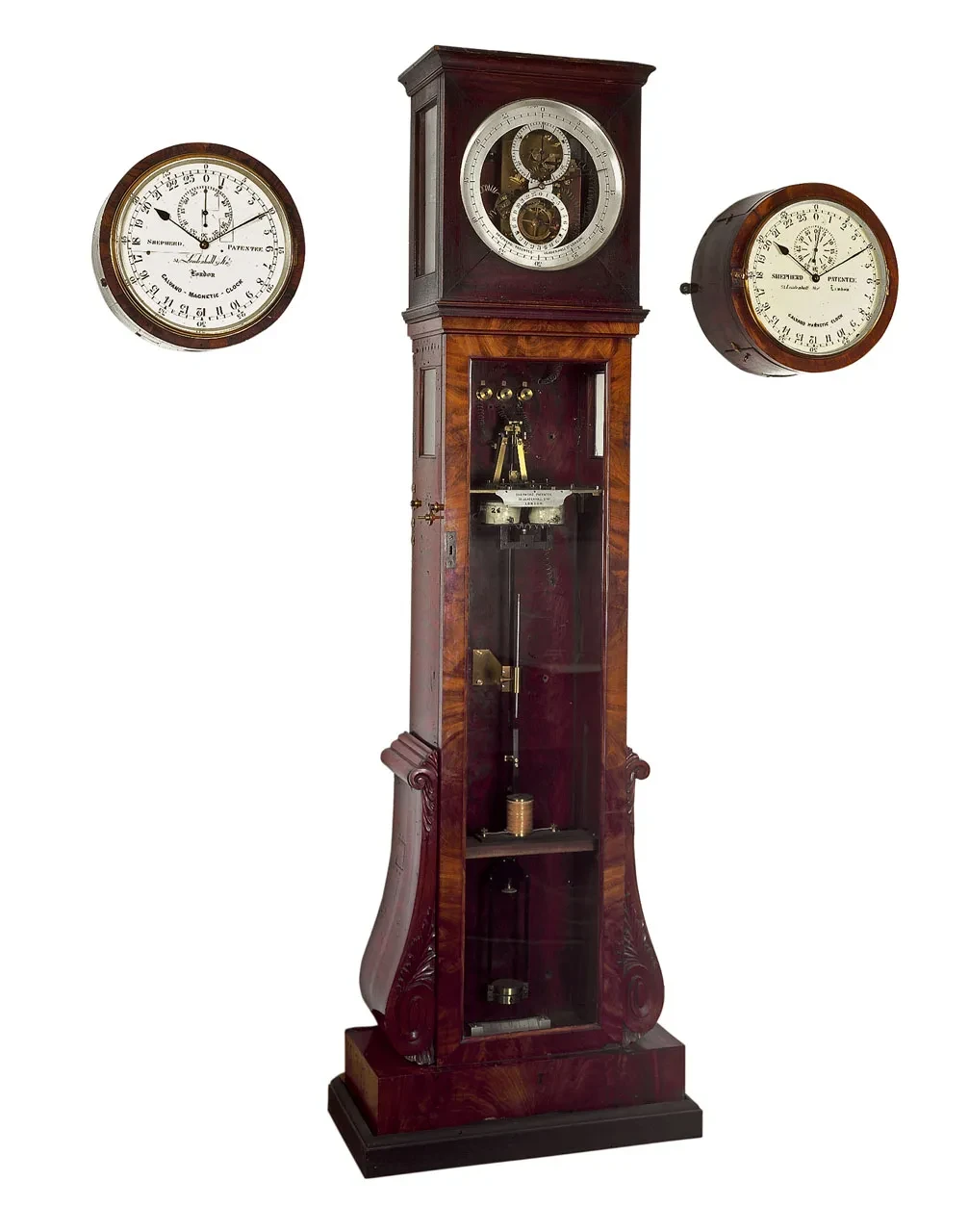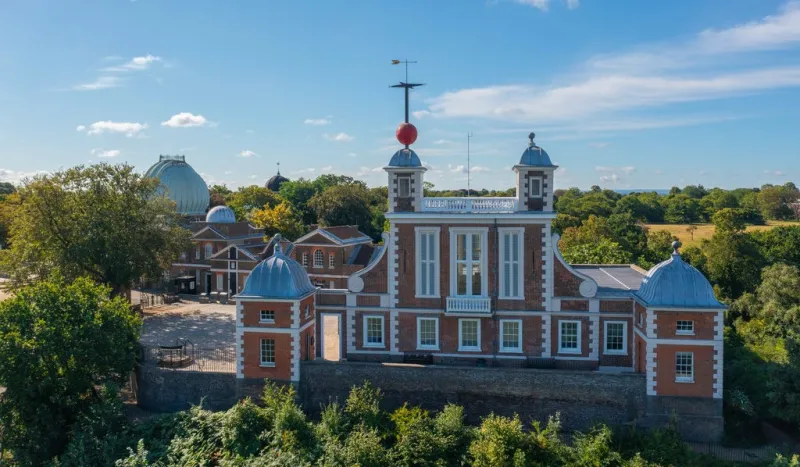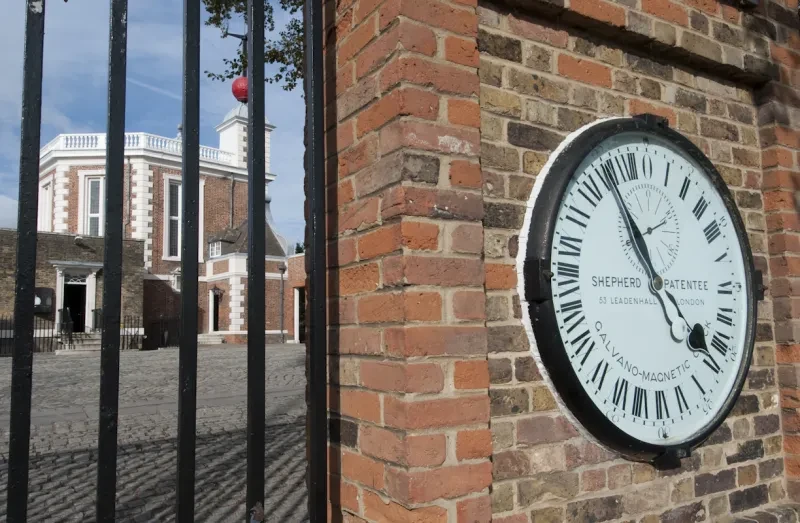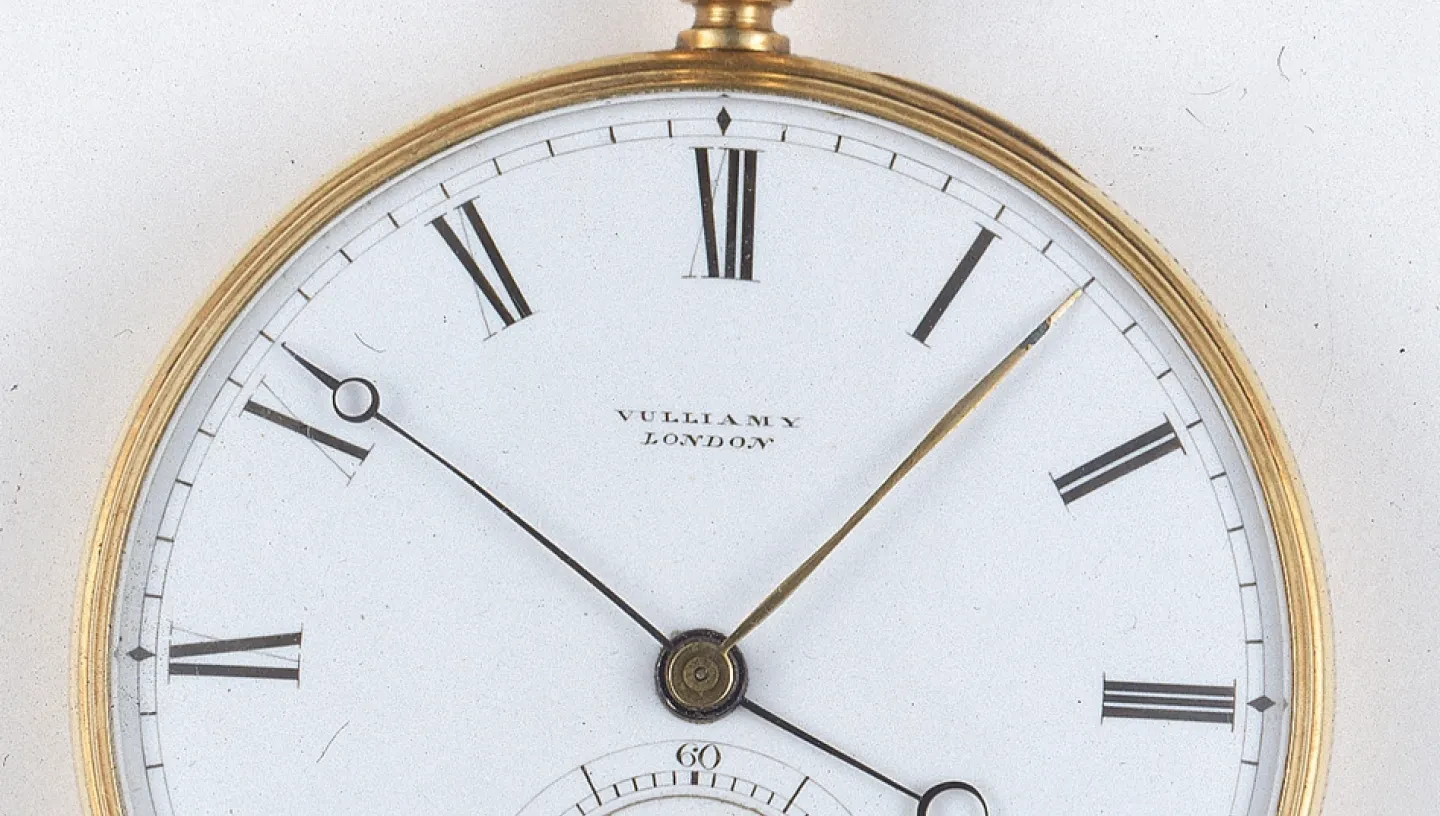
At first glance, a watch with two hands seems a handy gadget for a tourist travelling between time zones.
One hand could be set to home time and the other to the time of their destination. Simple right?
But if you look closely, you’ll see this watch actually has two minute hands and only one hour hand – not very convenient for an hour’s time difference. In fact, this watch was made decades before time zones were even considered. So what were the two hands for?
What time is it where you are?
In the early 19th century people in Britain kept time by clocks that were regulated by the Sun, called local mean time. Local mean time varied across Britain from east to west. This is because the Sun rises in the east, and it takes time for it to travel to the west.
So, for someone in Greenwich, noon would occur earlier in the day than for someone in Plymouth. Local mean time in Plymouth was about 16½ minutes behind local mean time at Greenwich, AKA Greenwich Mean Time (GMT).
Back when people travelled on foot or by coach, these local time differences did not matter much. Travel was slow and the inconvenience of a different time could be overcome by adjusting your watch – assuming you even had one.
This all changed with the introduction of the railways. Travel was faster, and with an ever-expanding rail network a good timetable became essential.
Initially, different railway lines would run using different times. For example, the North Western Railway’s trains ran on Liverpool time going down to London and on London time when returning from London to Liverpool. In addition, each station along the way kept its own local mean time. This could make travelling quite confusing.
In 1845 Henry Booth, a railway businessman involved with the Liverpool and Manchester Railway, petitioned parliament for a ‘Uniformity of Time’, and argued that when ‘the great bell of St. Paul’s strikes ONE, simultaneously, every City clock and Village chime, from John of Groat’s to the Land’s End, strikes ONE, also’.
Railway time, London time or Greenwich time?
1847 was a busy year. Twenty-seven new railway lines were added to the network, the Railway Clearing House (a regulatory body for the railways) recommended all railway stations adopt Greenwich time, and Benjamin Lewis Vulliamy made this watch.
Vulliamy had spent two decades trying to improve public timekeeping. He made public turret clocks across Great Britain. Most were in churches, but he also supplied royal palaces (including Windsor Castle and Hampton Court) and the General Post Office, located in St Martin's le Grand. Vulliamy became very enthused with the idea of standardising public time.
In 1828, he published a pamphlet entitled ‘Some consideration on the subject of Public Clocks’, arguing that none of the public clocks in the capital showed the same time, and if they were to be compared, or personal watches set to a particular time, he suggested ‘St. Paul’s as a standard, not on account of the accuracy with which it measures time, but from its local situation’. In 1845, another publication followed, this one titled ‘On the construction and regulation of clocks for railway stations’.
As some railways had already started using Greenwich time, or 'London time' as it was commonly known, for their timetables, different times could now be found between the station and the local time of the town or city.
After lamenting the ‘great practical inconvenience’ of these differences, Vulliamy suggested that all clocks should show both ‘London time’, which in fact meant Greenwich time, and the local mean time. A gilt minute hand would indicate ‘London time’ and the usual blued steel minute hand would indicate the local time. For many, Greenwich time became synonymous with London time.
Vulliamy’s call led to a discussion between civil engineers, most of whom thought it would be easier to just show Greenwich time, and that the railways should advise and promote ‘a uniformity of time’.
Help was on its way as a new electrical clock system installed at the Royal Observatory in Greenwich allowed the Astronomer Royal George Airy to send time signals to Lewisham station from 1852.
Using telegraph wires, the railways were able to distribute this time to stations across the country. Soon Greenwich time became available to many communities via the railways.
The time traveller's watch with two hands
As you can see, this watch is a portable version of Vulliamy’s idea for a two-handed clock, with a gilt hand to show Greenwich time and a steel hand that could be set to the place the traveller visited.
We don’t know who owned the watch, but with its 18-carat-gold case, we can assume this belonged to a wealthy traveller.
The Vulliamy family held a Royal Warrant and were known for producing high-quality pocket watches. Benjamin Lewis Vulliamy was clockmaker to King George IV, William IV and Queen Victoria.
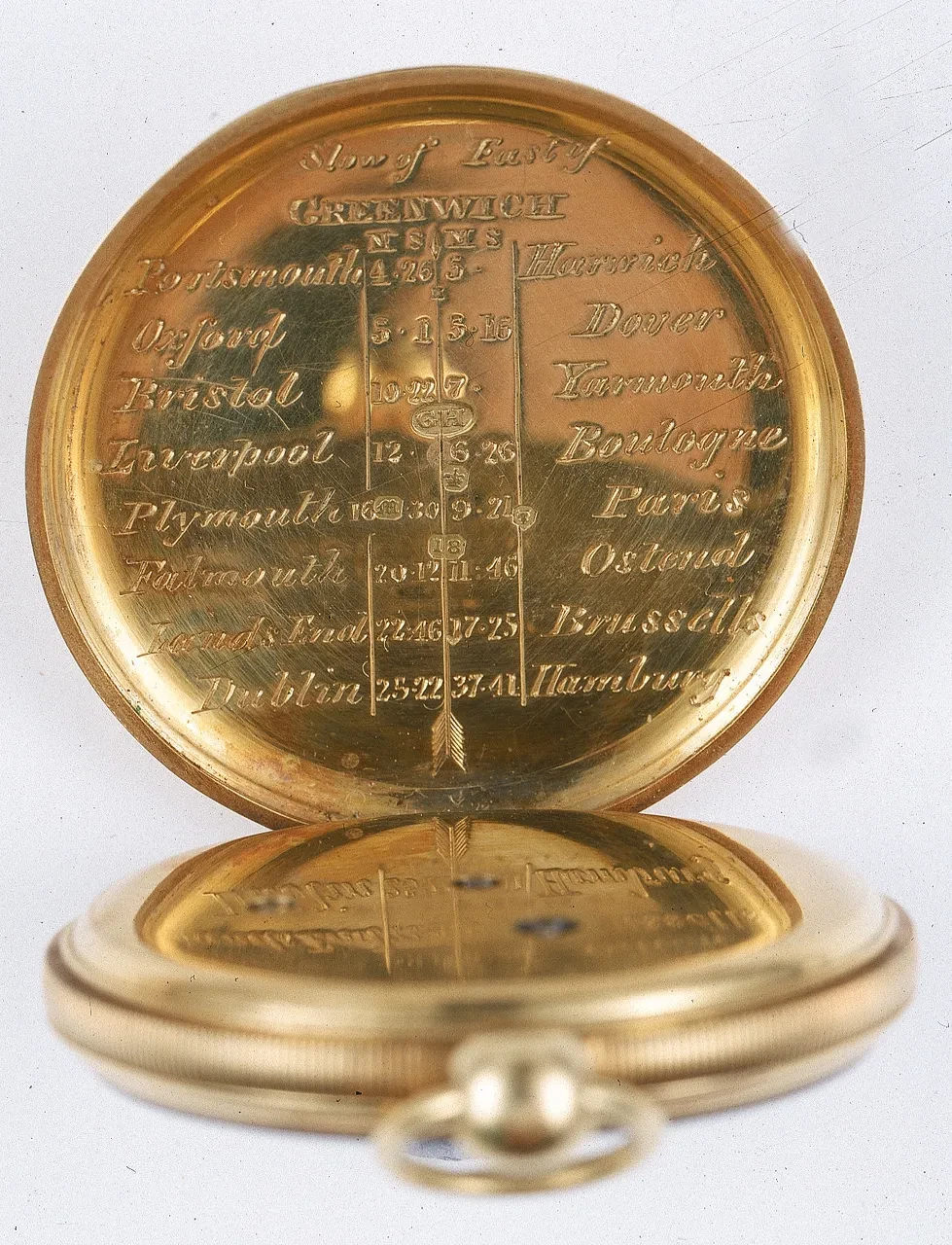
The engraving on the rear reveals that this watch helped a traveller beyond the railway stations, as many of the ports listed were not connected by rail at the time. But travel via rail and sea would have been common, so we can imagine this explorer travelling into Europe, perhaps on a regular basis.
Let’s imagine their journey from Liverpool to Paris. The gilt hand would be set to Greenwich Mean Time, indicating the time railways used for their timetables. While in Liverpool, the blued steel hand would indicate Liverpool time, running 12 minutes behind Greenwich time.
On arrival in Portsmouth, our traveller would need to set this hand forward by 7 minutes and 34 seconds to show Portsmouth time. Arriving in Boulogne, they’d again adjust 10 minutes forward to show the correct time there, and another adjustment of 2 minutes 55 seconds on arrival at Paris.
You can see how this may have been confusing, and why Vulliamy and others campaigned for a 'uniformity of time’. A decade later many public clocks around the country displayed Greenwich Mean Time.
In many cases this adaption went smoothly, but in the east and west of the country some people protested this ‘railway-time aggression’.
Eventually however, in 1880, Greenwich Mean Time became legal time in Great Britain.
